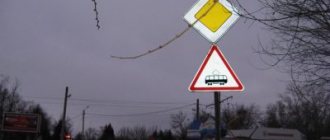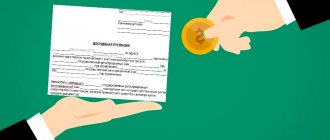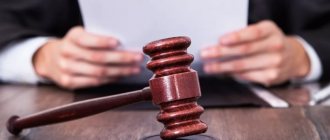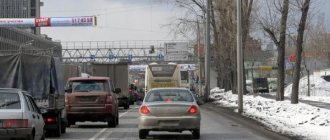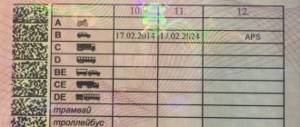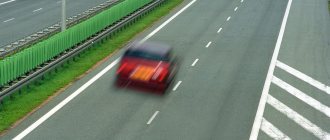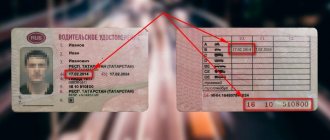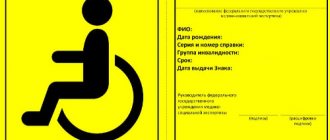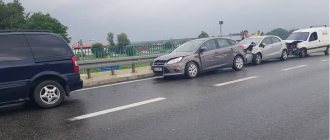If you hit a car from behind, who is to blame? A traffic accident is a very unpleasant event on the road. Usually there are two subjects of an accident - the culprit who caused the collision and the victim. Lawyer practice indicates that when a driver drives into the rear of a car, it is not always his fault.
Most often, during an accident, not all citizens understand the nuances of the event and always panic. In addition, they agree with the conclusions of the traffic police inspector when analyzing the accident and determining the culprit of the incident.
The article is intended to explain all the legal subtleties and specifics of this type of accident, to indicate what the possible reasons for its occurrence may be, and whether the driver who drove into the rear bumper is always at fault. After reading the material, the reader will know how to drive on the road and how to avoid trouble.
What does the traffic rules say if you overtake a car during an accident?
The accumulated experience of Russian auto lawyers involved in handling situations related to traffic violations indicates that you should not make hasty decisions (when a similar incident occurred) and immediately admit your guilt and pay off the damage caused.
To begin with, let's give a definition of traffic rules - this is a legal document designed to regulate not only the movement of vehicles, but to resolve all controversial issues that may arise in the event of a traffic accident between drivers.
For each specific case, this set of rules contains the appropriate formulation of what actions should be taken in a particular emergency situation.
In order to avoid colliding with the car ahead, you should adhere to the requirements and recommendations that are prescribed in the Rules.
Food for thought
Let us turn to section No. 9 “Location of vehicles on the roadway”, paragraph 9.10: “... the person driving the car must maintain such a safe distance in relation to the vehicle in front so that during emergency braking it is possible to avoid a collision with it. The same applies to the lateral interval.”
The essence of this postulate is that when you are driving on the road, the distance to the car in front should be such that if it starts to brake, the driver behind has the opportunity to slow down in time.
It is impossible to stop any vehicle by instantly pressing the pedal. This is achievable if it crashes into an obstacle (tree, wall). Therefore, maintaining a certain traffic distance when driving is the most important factor for safe driving, both in the city and outside it.
Clause 1 of Section 10 of the Rules says at what speed you can drive on the road, “... the vehicle must move in the mode that is established in this area, taking into account weather conditions, traffic congestion, technical condition of the vehicle, visibility and weight and character transported cargo."
The selected speed should provide the driver with the opportunity to constantly monitor the situation around him, so that if there is a risk of an accident, he can reduce it or stop driving, preventing a collision.
Expert commentary
Selivanov Alexander Andreevich
Lawyer, specialization civil law.
Ask a question
Therefore, when on a suburban highway or an intersection in the city one of the cars is driven into the rear and it is necessary to determine who is to blame, first of all, it is necessary to carefully study what happened, based on the norms prescribed in the Rules, taking into account all objective and subjective reasons.
What is your evidence?
If you act as a car approaching from behind, then the second participant in the accident may well say that it was you who drove into him from behind. This is a fairly common situation on the roads in 2019.
And in this case it will help you:
- the presence of a video recorder, which will show that you were standing and the car in front rolled into you,
- witnesses who can confirm the same.
A special case here is that the traffic police officers who arrived to register the accident will most likely believe the second participant. And an ordinary driver will accept guilt due to his lack of evidence. And completely in vain.
The whole point is that you can apply for a special examination - a traceological one, directly in the explanations that you will write when registering an accident or in the protocol or resolution that will be issued against you regarding non-compliance with clauses 9.10 and/or 10.1 of the traffic rules. Such an examination, as a rule, shows the direction of the blow with 100% accuracy and will thus help you defend what is right.
Hit a car in the back
And it seems like the most obvious accident: the car driving behind did not keep its distance and drove into the rear of the vehicle driving or standing in front. But the cause is not always failure to maintain a distance, so the rear one is not always to blame in such accidents. Below we will look at non-standard situations.
Cases when the driver behind is not at fault
Engine accident, who is to blame? There are situations in life when, in a collision, a motorist who has driven into the rear bumper of a car will be found not guilty.
This can be influenced by several factors, but first of all, it is the actions of the driver driving ahead that must be taken into account.
Indicate in which case in an accident the driver behind the train is not to blame.
Situations can be identified:
- The car ahead suddenly stopped moving due to unforeseen circumstances (it hit an obstacle or another vehicle).
- The one who drove into the rear was hit first.
- Group clash.
Let us analyze each of the indicated cases in more detail so as not to make mistakes in practice. The first thing you should do is not to panic and evaluate everything soberly.
It’s good when there was a camera (video recorder) working in the cabin, which can clarify the investigation process and speed up the identification of the culprit.
Hitting a car in front
This is one of the most common situations, let's analyze it in detail. In accordance with clause 9.10 of the Russian Traffic Regulations, the driver must always maintain a safe distance so that in the event of sudden braking, an accident can be avoided.
What is this concept and how is it interpreted in specialized scientific literature and reference books?
This is the distance between cars moving along the road at approximately the same speed in one direction, which allows the driver moving behind to avoid a collision with another car in the event of a sudden stop.
When driving, everyone will use the standard braking system, which cannot (due to many factors) instantly stop the vehicle.
However, if the next foreign car or truck ahead crashes into an obstacle, fence, infrastructure structure, or another driver, then he instantly stops and cannot continue driving.
The car moving behind (the person driving it) sees a suddenly stopped vehicle in front of it, and because of the accident that has occurred, takes a maneuver or reduces speed to prevent a collision.
However, more often than not, the braking system cannot react every second and an impact occurs in the rear bumper. At the same time, the driver will not be found guilty, since he could not, for objective reasons, suddenly stop driving.
This fact indicates the absence of guilt and in most cases there will be no administrative liability.
The person who drove into the rear was first hit from behind
To understand this situation, it is necessary to consider it with a specific example.
Three cars were moving along the highway, in the same direction. The first of them, before performing the maneuver, slows down, the second, keeping a safe distance, presses the brake pedal, reducing speed to avoid an accident.
At that moment, the third participant unexpectedly crashed into the bumper of the “second driver” in his car. Due to the impact, his car is carried forward and he hits the first vehicle.
Analyzing this episode, we can state the following: there is one traffic accident, the culprit of which is the owner of the third car, as he did not keep his distance.
Since the second participant in the accident kept a safe distance in accordance with the traffic rules, he could not have crashed into the first one without being affected by the impact of the person responsible for the accident.
After all, it was he who provoked the clash. The third driver did not comply with the requirements of current regulations and caused an accident, which caused damage to two more cars.
If the driver was hit in the ass later
Not everything is interpreted unambiguously here, so we will consider this case based on existing legal practice.
The first driver slows down, and the second, not keeping a distance, crashes into him. The car following behind hits the one in front, since the vehicle in front of it suddenly stopped moving.
In fact, there is a group collision between three traffic participants. How to understand such an extraordinary and complex situation at first glance?
It is obvious that the second driver is at fault, since he did not comply with traffic rules - he did not take into account the safe distance to the car in front. The third driver could not stop in 1-2 seconds, since an accident occurred ahead and an unexpected obstacle arose.
Then, as a result, the guilt will be recognized with the second participant in the group clash.
However, the third party involved in the accident may also be guilty. The degree of his responsibility may arise from a number of factors that may influence the final decision.
Such circumstances include:
- what is the time interval between the first and second collision;
- was there a safe distance between the last two cars;
- weather conditions and speed of all participants are taken into account;
- whether the third motorist was distracted while driving;
- Are there any DVR recordings?
Carrying out all the necessary examinations at the scene of the incident will thoroughly answer any questions that arise after this type of accident occurs. Taking into account all subjective and objective factors, it is possible to accurately reconstruct the picture of the accident.
Situation No. 1: decided to punish
According to all the rules, the driver is obliged to keep a distance between his car and the one driving in front. The Traffic Rules do not specify a specific footage - the distance must be safe to avoid a collision. As they teach in driving school, the driver must see the wheels of the car ahead. If you crashed, it means you got too close to the neighboring car.
But there are exceptions. Imagine, a bus was driving along a route, and when changing lanes it interfered with the driver of a neighboring car - that’s what the driver himself thought. And he decided to punish the driver - he pulled out in front of him and braked sharply. Accident. First, the bus driver was found guilty because he did not choose a safe distance. But then we looked at the video recorder on the bus and realized that the driver of the car was at fault. He braked sharply, violating paragraph 10.5 of the Traffic Rules. The bus driver was cleared of blame.
Many people remember the scandalous behavior of a Nizhny Novgorod driver in a cool foreign car, who decided to punish the driver of a school bus and pirouetted in front of him for 40 minutes, braked sharply, cut off, creating a danger for the children on the bus. At the beginning of this year, he was punished for obstructing a bus under a new article of the Criminal Code - 267.1 for endangering the safety of a vehicle. He was given the minimum fine under this article - 150,000 rubles. For most drivers, this is a significant amount, so before you lecture your neighbors on the road, think about what kind of punishment you might face. The fine can reach up to 300,000 rubles. They may also withhold income for 2 years or restrict freedom for the same period, or even send you to prison for 2 years.
When the car in front is at fault
Such accidents often happen on the roads. Often, a vehicle ahead or standing can provoke a serious accident, often with very serious consequences.
This may happen in the following cases:
- The driver was reversing and crashed into a moving car.
- An incorrect maneuver of the vehicle occurred (automatic set-up).
- The vehicle was in the wrong place on the highway and was poorly visible due to limited visibility by other road users.
In almost all of these cases, the vehicle in front will be at fault. However, we will consider each of these cases in more detail, referring to the current legislation regulating this type of offense.
The front one was moving backwards
The traffic rules specifically state that such a maneuver is classified as complex and requires professional driving skills and increased driver attentiveness.
Clause 8.12 of Section No. 8 of the Traffic Regulations indicates that driving in reverse, provided that the car does not interfere with other participants and does not affect their movement and maneuvering.
However, the Rules provide language when this is prohibited. You can't back up at intersections like that. In addition, such a maneuver cannot be done in places where turning is prohibited.
In accordance with clause 8.11 of the Traffic Regulations of the Russian Federation, this is prohibited:
- At pedestrian crossings.
- At intersections and bridges.
- In the tunnel and highway.
- At railway crossings and at stops.
- On overpasses and overpasses.
- Where visibility on the road is less than 100 meters.
Therefore, if the car was backing up and hit the car, the culprit will be the one who violated the traffic rules.
Note! When driving backwards, you need to control the situation, be extremely careful, move at a very low speed, and if necessary, turn on your hazard lights or honk.
Auto setup
This is not uncommon on modern Russian roads. Therefore, while driving you need to be extremely careful.
The best way out of trouble is to record the video recorder and call the traffic police. In such situations, there is always reason to suspect a criminal conspiracy among attackers, because there is more than one gang of scammers operating on the road.
In such situations, the main thing is not to get lost and not to give in to their persuasion. And if they start to “press”, you need to call the police and write a statement.
A typical case of an accident on the road is when the driver suddenly cuts off the car and exposes his rear. As a result, a collision occurs. Here the only salvation will be the video recorder and witnesses of the accident.
The vehicle was parked in the wrong place
This means when it is parked where it is prohibited to stop, as it interferes with other vehicles. These can be the sides of narrow roads, tram tracks.
For example, a heavy truck is in an area with limited visibility.
When such a collision occurs with a stationary vehicle, it is not uncommon to occur in an area with limited visibility. Often the driver does not see an obstacle in front of him at the last moment.
Therefore, the one who left his SUV or bus on the side of the road, which caused the emergency, will be found guilty.
Typical situations of accidents involving non-compliance with distance
There are several typical accidents that occur due to failure to maintain distance:
- Cars move in one lane in one direction. The speed limit is observed. Suddenly, the first vehicle stops abruptly without warning, and the second motorist drives into it without having time to brake. The driver of the second car will be found to be at fault for the accident if the front driver stopped to prevent the accident. A person is supposed to always be aware that the car ahead may stop abruptly. You need to drive at a distance that allows you to brake in time.
- The car behind was traveling much faster. As a result, he crashed into the vehicle in front. The driver who chose the wrong speed is found guilty.
- The car in front suddenly stopped for no reason. The driver of this vehicle was found guilty.
Is it possible that the rear driver is not to blame if the front driver brakes for no reason?
Emergency braking is one of the actions permitted by the Rules, designed to prevent a possible accident (Section 10.5 of the Traffic Regulations).
However, it is prohibited to brake suddenly or unintentionally on the road, as this may confuse or threaten the safety of other road users. In simple terms, you can only brake sharply in emergency cases.
In the situation under consideration, if the first driver braked without reason, he will be found guilty, provided that a violation on his part is proven.
The second participant in the accident, who drove into his bumper, will also be held administratively liable, as he did not maintain a safe distance while driving.
Therefore, when a driver crashes into the bumper of another car that applied emergency braking to prevent an accident, the culprit will be the second participant in the collision, who does not maintain the required distance.
In this case, the first driver must prove that an accident really could have happened and he sharply reduced speed or stopped.
How to avoid a rear-end collision
When driving on busy city highways, it is important to make thoughtful maneuvers, warning in advance of your intentions.
During my driving experience, I have developed some useful skills and abilities that prevent the development of dangerous situations on the road.
To prevent rear impacts, I adhere to the following rules:
- approaching a traffic light or intersection, I gradually reduce the speed, signaling this action with the help of brake lights;
- I constantly keep in sight the car that is following behind - this will allow, if necessary, to move forward in time, avoiding a collision;
- I try to minimize cases of sudden braking;
- I never try to rush through an intersection, I slow down;
- When stopping on the roadway, I make sure to indicate my car with hazard lights or warning signs.
These habitual actions shaped my driving style, which allowed me to avoid several unpleasant situations associated with the danger of rear-end collisions - in more than 20 years of driving, I have never been in an accident.
What to do if found guilty
This often happens on Russian roads. Police officers may take a careless and one-sided approach to the performance of their official duties and, without fully understanding it, impose a fine for failure to maintain a distance on a driver who has driven into the rear bumper of a moving car in front. Not all citizens understand what to do in this case.
It is necessary to explain in as much detail as possible everything that happened, provide facts and testimony of witnesses.
A DVR recording will undoubtedly help clarify the situation. If the data contained in the protocol does not correspond to reality, you can make notes when signing it, referring to the lack of proof of guilt.
When this does not work and the inspector has issued a decision to impose administrative liability or issued a receipt for payment of a fine, you must write a complaint to the city or district court within 10 days to challenge this decision.
The court, having begun proceedings, will usually resolve the disputed case. If you are aware of incompetent performance of your functional duties by traffic police officers, you can complain to the Internal Affairs Directorate of the Ministry of Internal Affairs of the Russian Federation or submit an application to the Prosecutor's Office.
Tips for beginners - if you hit the backside
First of all, we don’t want anyone to find themselves in such an unpleasant situation. Provided that this has happened, we recommend that you remember our few tips. They will help resolve any controversial issues that arise on the road.
What to do, 5 useful recommendations:
- Assess the situation and call the police immediately.
- It is mandatory to provide DVR recordings, if available, to prove your innocence.
- Collect witness testimony in as much detail as possible.
- If the conclusions of the traffic police officers are unlawful, file a complaint with the Prosecutor's Office or the Court.
- Hire a competent lawyer specializing in this type of administrative cases.
It is necessary to behave confidently and realize that the car in front itself provoked the accident and there should be no grounds for unlawful punishment.
At the same time, he advises in any case to maintain a safe distance on the road, not to reverse in prohibited places and not to exceed the speed limit. And, of course, monitor the functioning of the brake system and the general technical condition of the car.
Tatyana Viktorovna Kosykh, source avt-yurist.ru.
Be sure to share with your friends!
In megacities, small accidents, when cars receive minor damage, are common. Often a car driving behind crashes into the bumper of a car moving in front of it. Drivers are used to it: the one behind is to blame. But there are nuances in such accidents, the traffic police explain.
Is it worth it and how to appeal a fine?
Of course, if you are sure that you are right.
In order to appeal a fine for distance, you need to contact the head of the traffic police or the district court. The basis will be the unlawful imposition of a sanction under Art. 12.15 Code of Administrative Offenses of the Russian Federation. But there is no need to delay your application. The law allows only 10 days to file a complaint. The countdown of time begins from the date of receipt of the decision on the administrative violation.
The final decision is made within 10 days from the date of registration of the complaint with the traffic police department. If the fine is not canceled, it makes sense to file a lawsuit in the district court where the rules were violated. There, the proceedings last for at least 2 months (Part 1.1 of Article 30.5 of the Code of Administrative Offenses of the Russian Federation).
Advice! To maintain your innocence, prepare as much evidence as possible. Here it is appropriate to attach photos and video materials from the recorder, street cameras, an accident diagram, expert and technical opinions. Also involve witnesses by obtaining their contact information at the scene in advance.
Below we will look at the grounds on which you can challenge a fine for driving on the road.
If the car was standing
Let us repeat, if the car in front was not driving, but was standing still, you cannot be charged with violating clause 9.10 of the traffic rules. But with a high degree of probability, clause 10.1 will be charged, and there will be no fine for its violation in 2021.
And to prove that you are right, attach to the complaint a recording from the dash cam in your car. The video will show that the other vehicle was not moving in the same lane as you, but was parked, for example, in a parking lot.
If a collision occurs while reversing
It is for the distance that you cannot be fined.
What happens in this case? Let's look at 3 situations:
- If you drove in reverse along a prohibited area (for example, at an intersection) and crashed into another moving car, you may be fined for violating clause 8.11 of the traffic rules and issued a fine of 500 rubles (part 2 of article 12.14 of the Code of Administrative Offenses of the Russian Federation),
- If you were moving along a permitted area with a subsequent accident, the traffic police officer will issue a ruling refusing to initiate a case; the Code does not provide for fines for violation of 10.1, as we have already indicated above,
- If you were moving in reverse, and a door opened from the side of a parked car, causing you to hit it, it is not your fault. Here we are not talking about distance, but about lateral interval. In this case, the one who opened the door will be to blame. Although, in rare cases, in judicial practice the driver is also determined to be guilty of violating the lateral interval.
If you are preparing to appeal, build your arguments based on the direction the car was driving, that is, the movement was backwards and a collision with a vehicle standing behind - in our case, these are the two “pillars” of ideal protection.
The decision of the Vysokogorsk District Court of the Republic of Tatarstan in case No. 12-67/2013 on the abolition of the distance fine is indicative. The lady was backing up and crashed into a standing car. The judge explained that two conditions were not met: the vehicle was not moving and it was behind, not in front.
If there was no accident
This means there can be no fine.
They won’t write him out, but if you have the resolution in your hands, write a complaint to the traffic police with the motivation “no accident.” Most likely, the decision will be immediately canceled. But if this does not happen, go to the district court with a claim - the case is winning, and the law is on your side!
If you were driving on different lanes of the road
A fine for failure to keep the distance is possible only when driving on one lane of the road. The trajectories of the vehicles should not intersect.
Simply put, if your car is driving on the right side, and the second participant was moving on the left, followed by a lane change and a vehicle collision, then it is important to consider the case in dynamics. If inspectors issue a fine for distance driving, you can appeal it to the traffic police or in court. But you need to understand that with a high degree of probability an examination will be ordered, where the question will be briefly posed approximately as follows: what (whose violation) caused the accident? Changing lanes of the second participant, when he simply “crawled” under your car, and you did not have time to increase the distance to him, or time passed after changing lanes, and you continued to move with too little distance to him.
There is positive judicial practice, for example, the decision of the Sovetsky District Court of Tomsk in case No. 12-251/2019.
If the person in front brakes too hard
Again, it all depends on the situation.
- There is a concept called “unnecessary hard braking,” when the driver presses the brakes for no reason (for example, as a joke). And if someone slows down like that, and you don’t have time to react and drive into his backside, it won’t be your fault. Here we are talking about a violation of clause 10.5 of the traffic rules on the part of the braker. He made the maneuver not with the aim of avoiding an accident, but unnecessarily. But of course you need proof. Therefore, if the second driver does not agree to plead guilty, go to court with video recordings or street surveillance cameras. They will help prove that there was no threat of an accident at the time of braking.
- If braking is justified and you collide with the car in front, the blame will fall on you. And at the same time a fine of 1,500 rubles. That is, they will punish you for not keeping your distance, which is why you did not react in time to the emergency stop of the first vehicle.
There is only one piece of advice here - keep your distance and speed limits. This will reduce the risk of crashing into another car. Well, it will help you avoid unnecessary fines for violating traffic rules.
